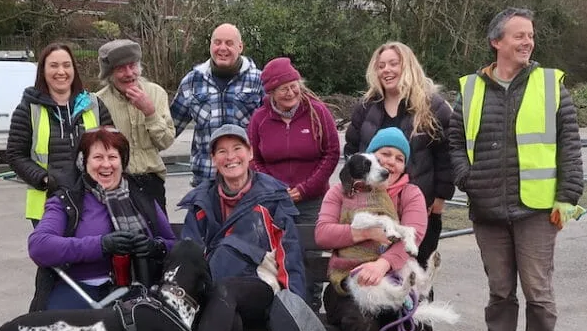Lumi Westerlund: Climate Mitigation As An Added Benefit

There is no denying that there is a pressing need for an active and immediate response to the changing global climate, but joining the efforts to tackle environmental issues is understood by many to require much time and financing. Implementing low-carbon initiatives for the purpose of saving the planet can be difficult for communities who lack the resources to devote to such projects. Instead, these groups must focus on issues that are more directly and clearly relevant to their daily lives. In short, they cannot afford to attend to greater planetary issues until their own needs are met – or so the story goes.
In reality, however, addressing the climate crisis and tackling societal issues and inequities do not need to be mutually exclusive, but may instead be inextricably linked. As such, it is important to present communities with sustainable and reasonable solutions to the day-to-day problems that are of greatest importance to them.
Increasingly, sustainable brands and companies are working to provide eco-friendly alternatives that are attractive to those who do not wish to exacerbate climate issues, yet often these options are pricey and out of reach for lower income individuals. Initiatives that rely on collaboration between councils, companies and underserved communities can help bridge this gap between affordability and sustainability.
Often, in an effort to house increasingly dense urban populations, there is a loss of green space which is often crucial to the physical and mental health of residents. Lower income residents, and more often than not people of colour, are seeing the least amount of green area in their neighbourhoods. A lack of trees and other cooling and water-absorbing greenery in an area means warmer air temperatures, poorer air quality, and greater susceptibility to damage from uncontrolled floods.
Community gardens and tree-planting efforts can help improve quality of life for residents while simultaneously pursuing carbon-capturing solutions. Cornwallis Crescent Community Orchard in Portsmouth is taking a natural and sustainable approach to improving residents’ lives. They plan on offering training and horticultural knowledge to children, students and others who live nearby, in addition to adding a natural environment to their urban centre.
Local initiatives such as this one have ‘co-benefits’, in which a sense of community and purpose is strengthened; the health and wellbeing of neighbourhood residents is improved; and the inequities in urban living standards are addressed. Low-carbon efforts need to be developed in such a way that they are not only considerate of the environment, but also recognise how attention may simultaneously be given to those in the district who need it.
Many further initiatives featured on Carbon Copy – such as Greening Stevenson Square which is planting trees, constructing green roofs and installing new water-absorbing, recycled pavement in Manchester – are working with communities to bring natural spaces back into urban areas, along with all of the advantages that follow. Tiny Forests, which joins local leaders in planting an urban-resilient forest specialised to the area in question, is another prime example.
Beyond green spaces, affordable housing is a major necessity for families across the UK, and low-carbon initiatives can actually address this need rather than detract from it. Low Impact Living Affordable Community (LILAC) in Leeds is an illustration of how sustainable co-housing schemes can offer homes to those who need them at low expense to both their wallet and the planet. Goldsmith Street council-owned housing in Norwich is another affordable and sustainable example which is built to maximise natural sunlight and heat retention in homes, and thus requires lower energy usage. The development’s green links to nearby parks even consider the aforementioned importance of common natural spaces. Both collaborative projects highlight how greater fairness and low-carbon initiatives go hand in hand.
It is essential in our discussions of how to address climate change that we recognise the interplay of reducing carbon emissions and helping improve the health, lives, and resilience of those who need it most. In discussing sustainable measures that cities and towns throughout the UK can take, examples and proposals that meet other needs, such as health and housing, are more likely to gain momentum and community support. Let’s be mindful of how we might attempt to create more equitable cities for our more vulnerable and underserved citizens as we all work towards a climate-friendly future.
Photo by United Nations on Unsplash

Lumi Westerlund is a second-year student at Mansfield College, Oxford studying Philosophy, Politics and Economics. She recently took part in a micro-internship programme at Carbon Copy.
Recommended from Carbon Copy
-

Copy These! 5 Big Local Ideas About Using Decentralised Energy
Communities around the UK are generating their own electricity - through solar, hydro and wind. But how can they ensure…
-
 Affordable Energy, Buildings & Places, Climate Action, Good Food, Greater Fairness, Health & Wellbeing, Less Waste, More Jobs, Strong Communities
Affordable Energy, Buildings & Places, Climate Action, Good Food, Greater Fairness, Health & Wellbeing, Less Waste, More Jobs, Strong CommunitiesCopy These! 5 Big Local Ideas About Creating A Community Hub
Learn how communities are reinvigorating once-forgotten spaces, to bring local environmental, social and economic benefits.